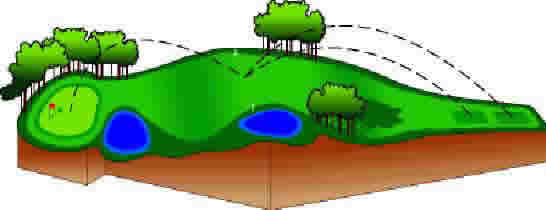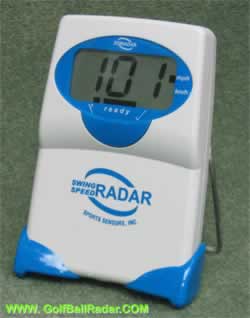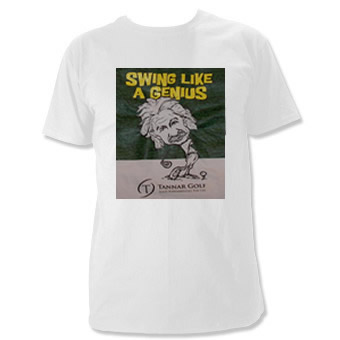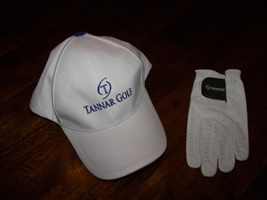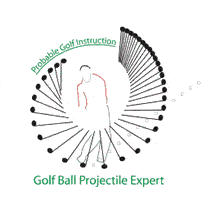
|
|
|
Master of Your Own Game
The focus of this newsletter, and the entire Probable Golf Instruction site, is to enable the golfer to have the lowest possible average score by making the best club selection on each shot. In short, it is to make you as a golfer the "Master of Your Own Game." Each golfer is limited physically by his/her swing and short game, but can shoot lower scores without making physical improvements by improving the mental aspect of the game, of which there are many facets. This newsletter deals with an aspect often neglected by players and teachers alike; how to make better choices on the course based on ability. The foundation of the ideas presented here are based on pure physics and mathematics using the latest scientific golf research. Try out my new Driver Distance Calculator. Change temperature, clubhead speed, loft, energy and see how far the ball goes. Get a copy of my latest study. A statistical analysis of over 1600 scores of golfers handicaps 0 - 36. Graphs and charts display the data. The scores were used to simulate
over 140 000 matches. Do the holes on your course have a fair handicap
difficulty ranking? Are there some holes you rarely win? Find
out how to calculate the actual difficulty of your holes. Check
out the This newsletter goes beyond "course management". It quantifies what one needs to improve course management that leads to lower scores. Consider a 400 yd par 4 like the one in the graphic below. From the tee there are trees right and trees and water left. Too long of a tee shot will end up on a downhill slope. To have a flat lie, the drive tee shot should be not more than 250 yds. On the second shot, water guards the most of the green in front and trees guard the right and the rear. Left of the green is out-of-bounds. The pin is on the left rear of the green.
Where should the golfer play his/her shots? It all depends on the ability of the player. Tiger Woods obviously has the most options open to him but he will play the hole in a way that gives him the best chance at the lowest score on the hole. A 15 handicapper will play the hole differently and will score higher, but there is an optimum way to play the hole. Not every 15 handicapper should play the hole in the same way either; it all depends on the strengths and weaknesses of the player's game. It depends upon the player's shot patterns (where he hits various clubs, distance and precision). Many golfers have higher handicaps because of poor club choices, not poor physical ability. As an example, let's say a 15 handicap can hit a driver on average 250 yds (so he doesn't need to worry about hitting too long and having a downhill lie on the second shot) but only hits 50% of the fairways. He can hit a 3-wood 225 yds and hit 70% of the fairways. His shot pattern with the driver is to hit 40% of his shots right and 10% left. His shot pattern with the 3-wood is to hit 20% left and 10% right. Which is the best choice? The mathematical laws of probability can be used to determine the likely results based on past performance. Let's say a tee shot to the right adds an average of 0.5 strokes to the score because of being in the rough and/or in the trees. A tee shot ending in the water would add 1.0 stroke due to a penalty. If the player uses a driver, it would be expected that 50% of the time he would be laying 1 (in the fairway), 40% of the time he would be right laying 1.5 and 10% of the time he would left in the water laying 2 (dropping with a penalty). On average the expected score after the tee shot would be: 0.50*1.0 + 0.40*1.5 + 0.10*2.0 = 0.50 + 0.60 + 0.20 = 1.30 strokes Likewise, with a 3-wood, the expected score would be: 0.70*1.0 + 0.10*1.5 + 0.20*1.5 = 0.70 + 0.15 + 0.30 = 1.15 strokes The 3-wood would yield 0.15 fewer strokes, partially due to the improved accuracy of the 3-wood and the fact that the water on the left is not reachable with a 3-wood. If the same situation occurred on all 18 holes in a round, that would be 2.7 strokes less using a 3-wood. Of course, using a 3-wood would leave a longer second shot so the total score on the hole would be determined by his shot patterns for clubs he might hit on his second shot. A driver would leave him 150 yd and thus a 7-iron and a 3-wood would leave him 175 yd and thus a 5-iron. Let's say he hits 50% of greens when hitting a 7-iron and 40% when hitting a 5-iron. When missing a green he takes 2.9 more stokes (a total of 3.9 including the shot to the green) and when hitting a green he takes 2.4 more strokes (a total of 3.4). Using a driver followed by a 7-iron would yield: 1.30 + 0.50*3.4 + 0.50*3.9 = 1.30 + 1.7 + 1.95 = 1.30 + 3.65 = 4.95 Using a 3-wood following by a 5-iron would yield: 1.15 + 0.40*3.4 + 0.60*3.9 = 1.15 + 1.36 + 2.34 = 1.15 + 3.70 = 4.85 So, even though the number of strokes used on the 2nd shot is higher with a 5-iron (3.70), the lower number of strokes with the 3-wood yields and total of 0.10 strokes total lower (1.8 strokes for 18 such holes). This, of course assumes a certain short game ability and where the approach shot is aimed based on the pin position. For more on approach shot statistics, click on this link. For a player to know how to best play a hole, he must know his shot pattern. Too often golfers take risky shots because they have made successful ones in the past. More often than not, high scores result and then another aspect of the game kicks in; controlling your emotions. If you would like to have your precise shot pattern determined, you can collect 10 rounds of statistics and email them to me. I'll do an analysis for you and send you the results. Or you can purchase a year's subscription for only $15.99 Canadian. You just continue to send me your stats and I'll determine your shot pattern and make recommendations. See a sample report here. Purchase a year's subscription. If you have any questions or comments, feel free to email me at golfexpert@probablegolfinstruction.com ©Probable Golf Instruction, Ken Tannar 2001-2012. All Rights Reserved. Langley, B.C. V2Y 2G4 CanadaPhone: 604-309-7030 FAX: to fax, email an attachment probablegolf@yahoo.ca or golfexpert@probablegolfinstruction.com |
| GOLF ASSISTANTS |
|
Golf Trip Pairing CalculatorPlanning a golf trip with some friends/family? Trying to sort out the foursomes so people don't play too often with others? Order your ready made Spreadsheet. Type in the names, print out the groupings. Minimize repeat pairings.
Wind Caddy will advise you on aim, distance and club so that you can play the wind successfully. It takes the guess work out of club selection. New option to enter custom distances for each club. The algorithm will make a club suggestion accordingly. Use the right club in every condition!
|
|
|
| GOLF NEWS |
Receive a complimentary golf cap and leather golf glove.
Golf Putting Green Reading Glasses |
| GOLF NEWSLETTER |
Statistics
·Putting
·Long Balls
·Games
·Handicap
·Scoring
·Shot Patterns
·Tournaments
·Tours
Pro Shop
·Ball Marker Engraved
·Books
·CDs & DVDs
·Green Reader
·Impact Labels
·Laser Rangefinder
·Longer Drives
·Products
·Teaching Aids
|
Subscribe to the Probable Golf Newsletter
and
|
| GOLF POLL |
The 19th Hole
·Advertising
·Ask the Golf Expert
·Consultation/Litigation
·FAQs
·Golf Blog
·Golf Draws
·Links
·Science of Golf
·Tell a Friend
·Testimonials
·

Golf Ball Finder Glasses
Find all your errant golf balls and many more!
| GOLF TIPS |
How to play:
|
